The Abbey of St. Hildegard. Preserving Architectural Heritage, Shaping the Future
The Benedictine nuns of the Abbey of St. Hildegard in the Rheingau region, dedicated to continuing the legacy of Saint Hildegard of Bingen, are deliberating on how to sustainably shape and purposefully utilize their expansive premises in the years to come.
Since spring 2023, we have been accompanying the community on this journey. Initially, we collaborated with the entire convent to delineate the sisters' visions regarding the site's usage. Subsequently, an initial round table discussion was held with regional stakeholders. In collaboration with the Chair of Building Cultural Heritage at the RheinMain University of Applied Sciences in Wiesbaden, we are devising innovative strategies to consolidate the cloister and optimize available spaces. Moreover, students from the Department of Interior Architecture at the University of Mainz are tasked with generating ideas for repurposing the crypt into a columbarium. The project is receiving technical oversight and support from the Hessian State Office for Monument Preservation.
Photo: Abtei St. Hildegard
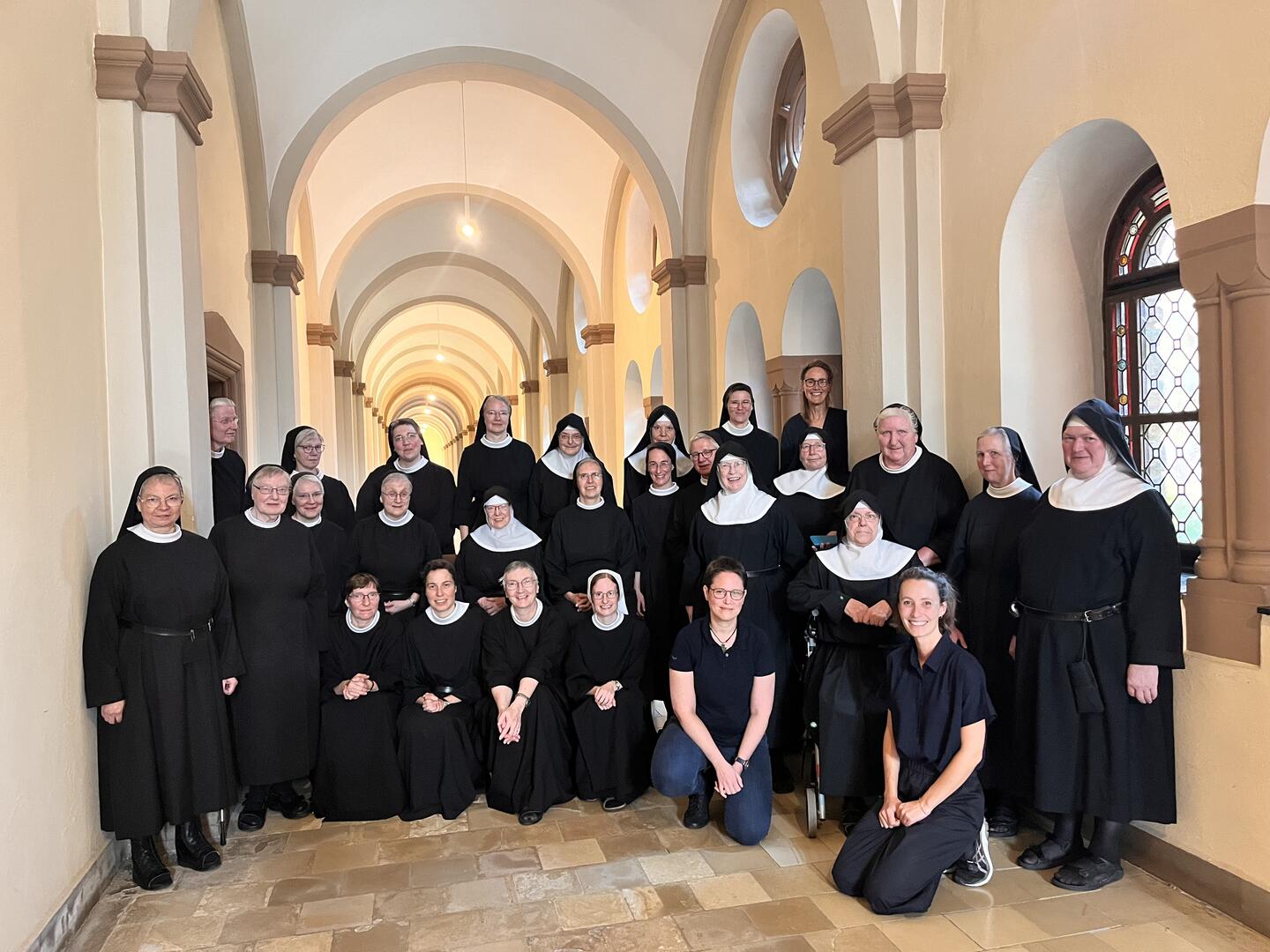
Future Zinneberg Castle
Since 1927, the Sisters of the Good Shepherd in Germany have held ownership of the magnificent Zinneberg Castle, nestled in Markt Glonn, Ebersberg district, in Upper Bavaria. Currently, the congregation is actively working towards establishing a meaningful purpose for this 18th-century castle and its surrounding park grounds. Their aim is to particularly bolster the adjacent youth welfare facility while upholding the essence and history of the estate and its inhabitants, and ensuring seamless integration into the local community. Within the castle grounds, the congregation operates a thriving youth welfare facility, providing diverse housing, daycare, and educational services.
kulturräume gestalten has been supporting the congregation in this endeavor since 2023. Two round table discussions involving experts from our network, as well as representatives from politics and administration, have yielded three specific usage scenarios that are currently being further explored. The project is a pilot initiative of the Bavarian State Office for Monument Preservation.
Foto: Ulrike Maria Rose

Publications
Besides our architectural projects, our office places a strong emphasis on effective communication and modern design. Alongside various publications under the umbrella of StadtBauKultur NRW, which include works on repurposing churches, we've recently collaborated with artist Jutta Görlich and Munich-based photographers Ulrike Myrzik and Edward Beierle on the publication "KLOSTERFRAUEN FRAUENKLÖSTER," released by JOVIS Verlag. Additionally, we have produced a travel guidebook for the International Building Exhibition IBA Thüringen..
Foto: Herburg Weiland
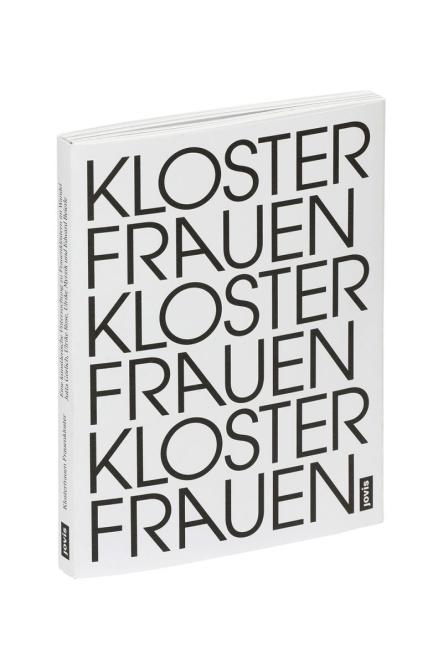
Podcast
In a fresh initiative within the religious community, a podcast series titled “Mit anderen Worten. Zwei Welten im Gespräch” has emerged, aiming to shed light on the values of German-speaking Dominican sisters and their relevance in today's society. The inaugural episodes, available on all major podcast platforms since late March, delve into diverse themes:
Philosopher and author John von Düffel engages in a conversation with Sister Judith Moormann about the merits of living simply and consciously. Literature and cultural scholar Aleida Assmann joins Sister Scholastika Jurt to discuss the significance of rituals. Social medicine expert Gerhard Trabert and Sister Klarissa Watermann exchange insights from their work with the homeless, pondering the extent of compassion needed for societal cohesion.
Graphics: Gottweiss · Visuelle Kommunikation

Zukunft Kulturraum Kloster e.V.
To draw attention to the disappearance of religious communities from the monasteries in Germany and to provide these communities and potential successors with as much information as possible for handling the significant architectural heritage, kulturräume gestalten founded a nonprofit association in 2020.
The association Zukunft Kulturraum Kloster e.V. launched an online knowledge portal on monastery transformation with support from the federal government and realized two future labs and an initial political roundtable.
In 2023, the
association served as the host of the Transformationen23 exhibition by
artist Anna Schölß and program director Johannes
Hochholzer. Association member Franziska Fruth is
preparing a multimedia guide on the transformation
of the Kloster Schlehdorf district for the
association in 2024/2025. Another goal of the
association is to establish a competence center or
foundation for monasteries at the federal or state
level. Sister Josefa Thusbaß and Ulrike Rose, the
two chairpersons of the association, are also
advocating for this on the political front.
Website design: Studio Vanith
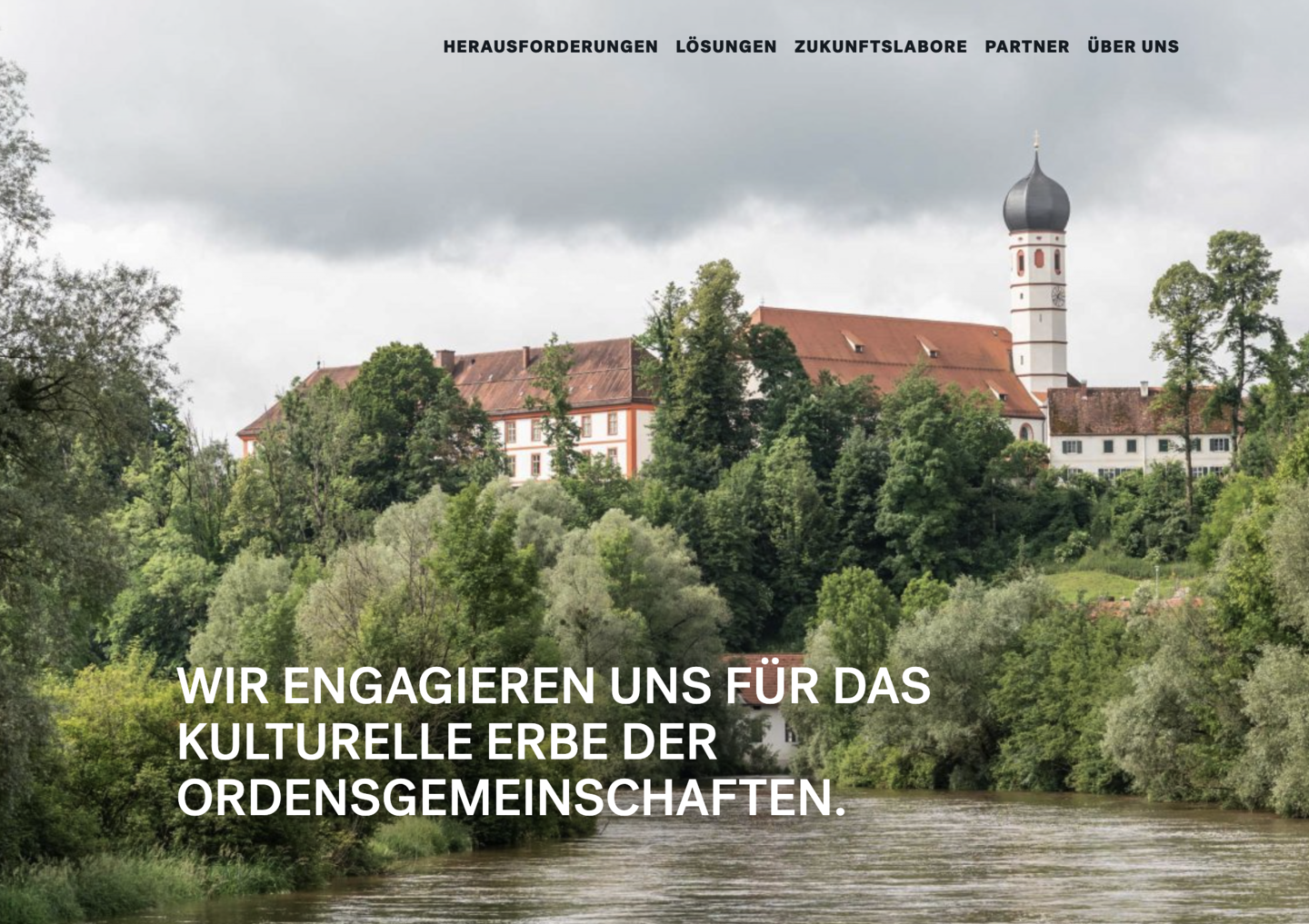
Future Kloster Oberzell
The Oberzell Franciscan Sisters reside and carry out their work, among other places, in a beautiful former Premonstratensian monastery situated by the Main River in Würzburg. Anticipating the future of their properties, lands, and facilities, the Franciscan Sisters commenced their deliberations in due time. Ulrike Rose led the Commission for Properties, Lands, and Facilities from 2020 to 2022, collaborating with the sisters and additional experts to devise proposals for future sustainable usage. She continued to contribute until 2024 as part of the Congregation's Transformation Council, actively participating in the realization of these initiatives.
Photo: Ulrike Maria Rose
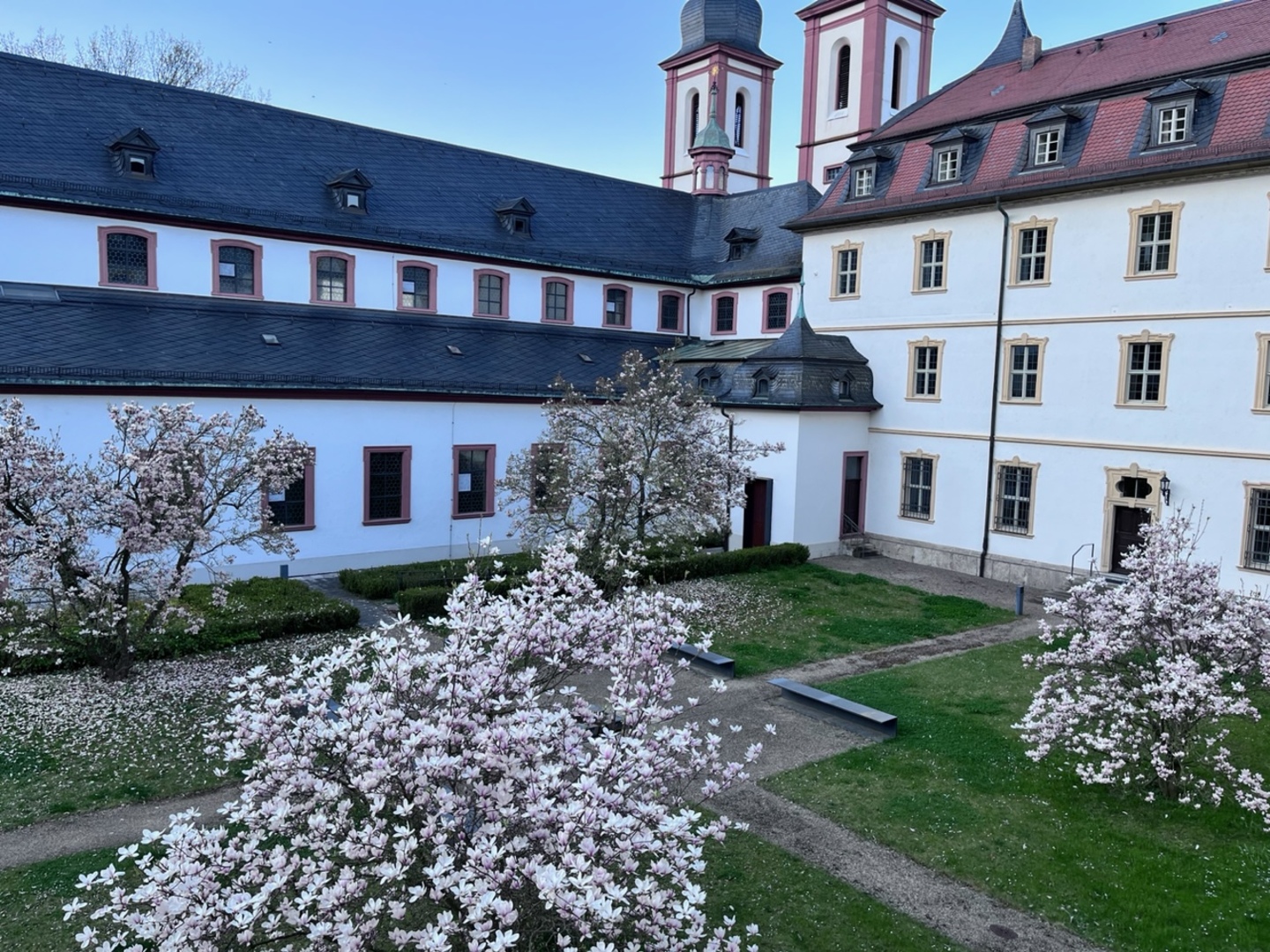
Transformation of Schlehdorf Monastery
Across Europe, hundreds of monasteries are currently facing the end of their traditional purposes. For the first time, a bold housing cooperative is taking responsibility for a monastery just outside Munich and creating affordable living and working spaces here.
Ulrike Rose has developed the concept for the Cohaus Kloster Schlehdorf and has played a significant role in the transformation of the 300-year-old women's monastery.
Photo: © Ulrike Myrzik
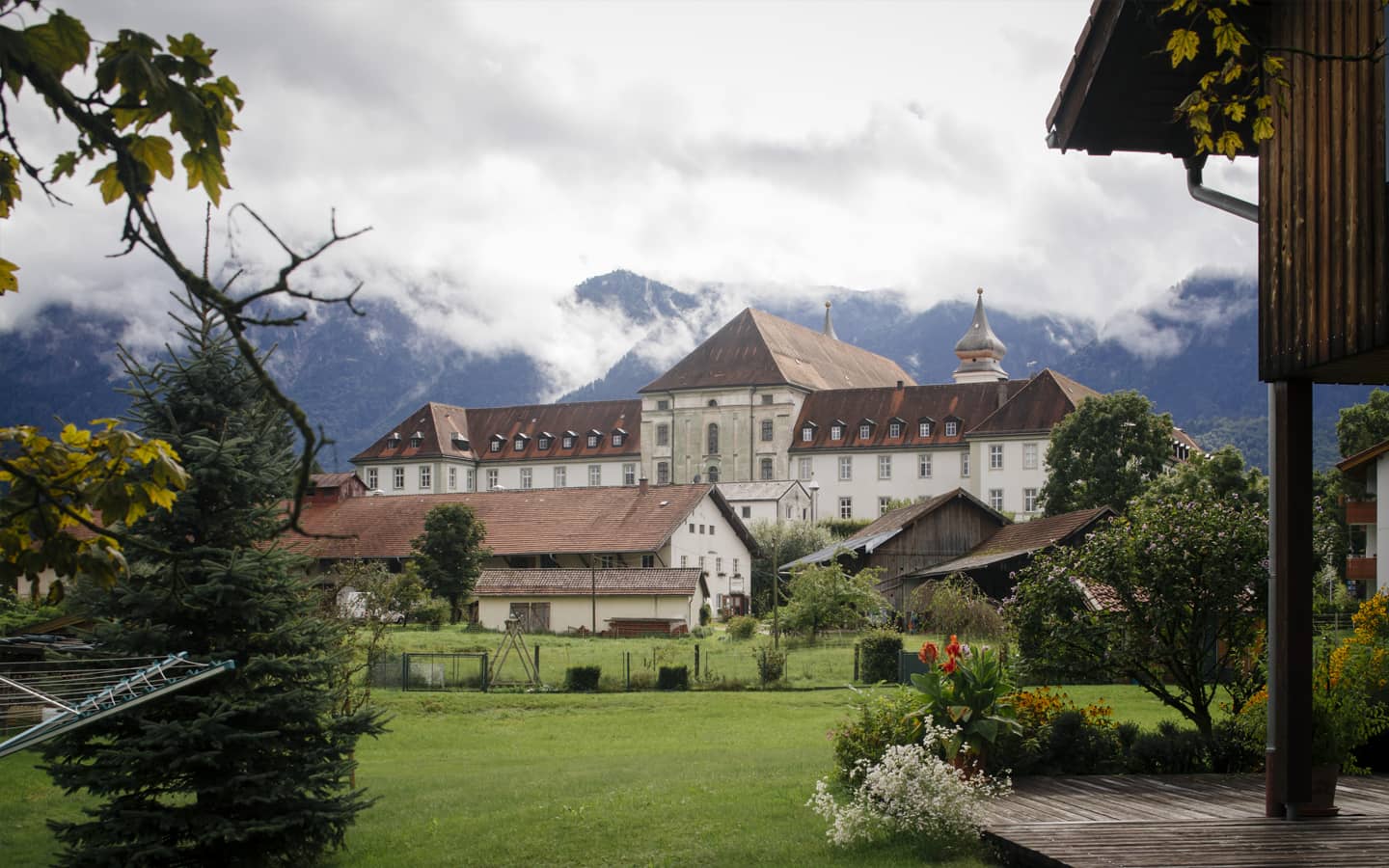
Sommerfrische Schwarzatal
For many decades, summer guests flocked to the picturesque Schwarzatal in the Thuringian Forest for their summer retreats. However, after the fall of the Berlin Wall, the valley fell into obscurity, and the charming summer retreat architecture with its towers, verandas, and balconies became deserted. As part of the International Building Exhibition IBA Thüringen, Ulrike Rose spearheaded a contemporary campaign to revitalize the architectural culture. With the opening of houses during the "Summer Retreat Day," the downward trend has since been reversed, fostering a renewed sense of optimism in the valley. In 2022, a travel guidebook on the Schwarzatal was published under the editorial leadership of Paula Oster and Ulrike Rose.
Grafik: Gottweiss · Visuelle Kommunikation
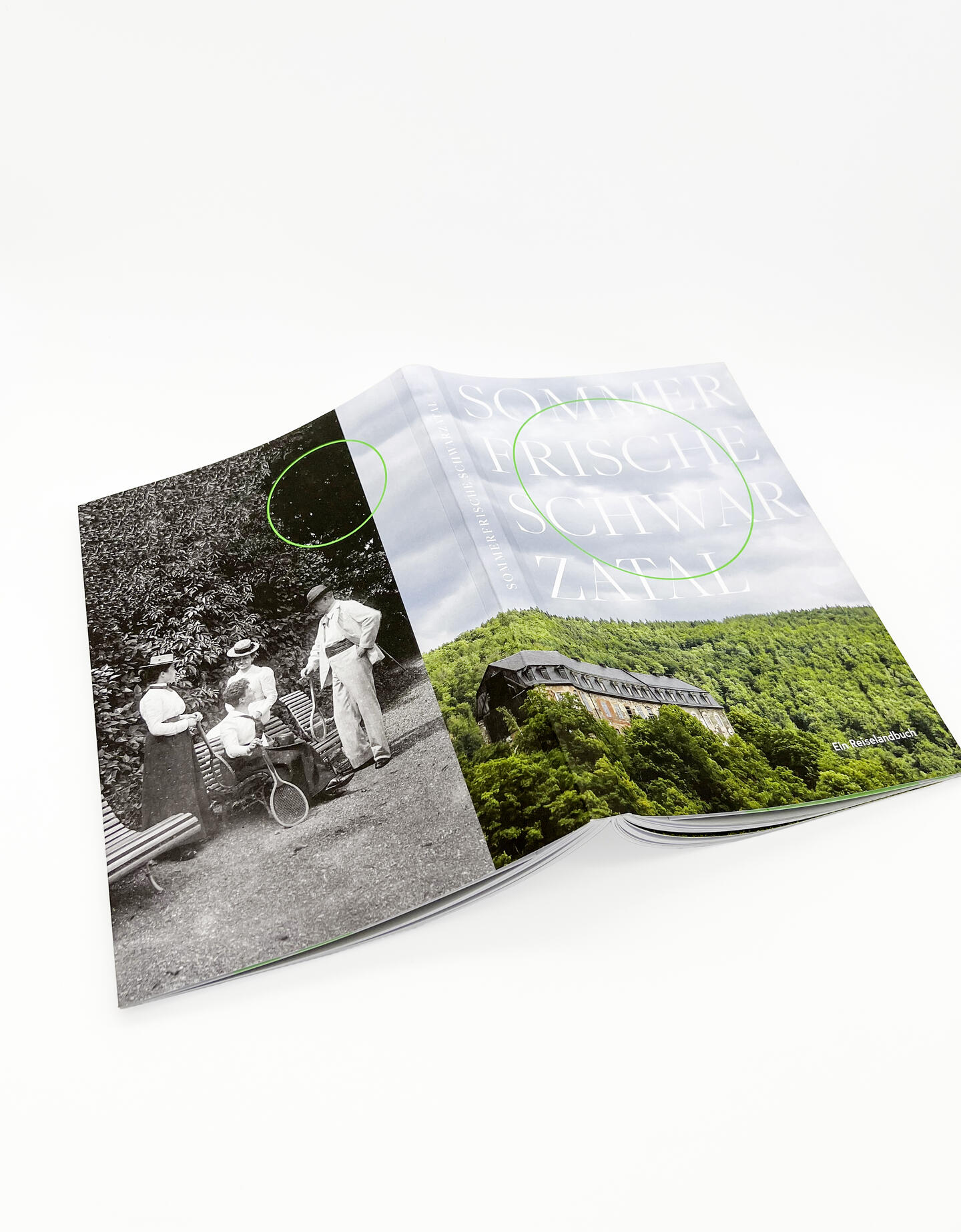
Liebling Haus – The White City Center Tel Aviv
The Liebling Haus, located in the heart of Tel Aviv, is a German-Israeli project between the city of Tel Aviv and the Federal Republic of Germany. This former residential building opened its doors in the Bauhaus Centennial Year of 2019 as a monument, exhibition, and architecture center.
Ulrike Rose provided technical support and communication guidance to the team in Israel and the office in Germany. This included spearheading the "open for renovation" campaign during the renovation phase, organizing the opening campaign, initiating a temporary installation by raumlabor Berlin, and conceptualizing a future circle of friends program.
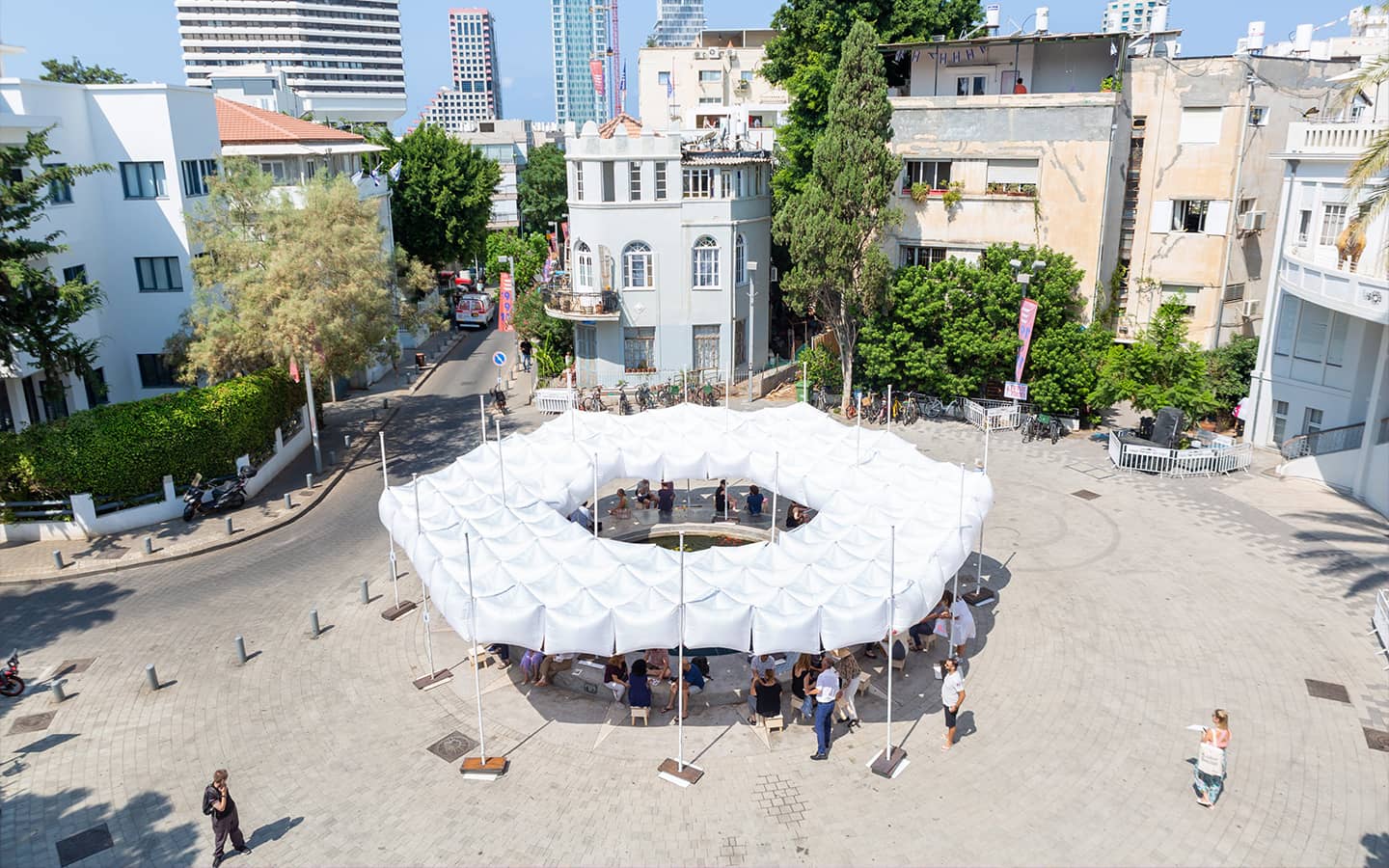
kulturräume gestalten / Shaping cultural heritage
Ulrike Rose and Paula Oster specialize in crafting tailored ideas and concepts for the future of women's convents, offering guidance to religious communities with their expertise in Baukultur and communication.
Our consultancy focus centers on identifying suitable (co-)uses for expanding motherhouses through strategic partnerships, involving regional stakeholders, as well as experts from our extensive network. We also assist in navigating government funding opportunities and providing hands-on support when needed.
Simultaneously, our office builds bridges between religious communities and those who share their values; connecting with individuals committed to carrying forward the spiritual and social heritage, as well as communal living, into the future.
Ulrike Maria Rose
Dipl.-Kff. | Cultural Manager
Chair of the Future Cultural Space Monastery Association
Dipl.-Kff. | Cultural Manager Chair of the Future Cultural Space Monastery Association
Ulrike Rose has been engaged in architectural culture since the early 2000s. As Managing Director of the Förderverein Deutsches Architektur Zentrums from 2001 to 2005, she coordinated the establishment of the Bundesstiftung Baukultur, followed by five years steering the Landesinitiative Landesinitiative StadtBauKultur NRW. From 2011 to 2013, she served as the artistic and managing director of the Stiftung Insel Hombroich, further developing the former rocket station into an architectural landmark and artist hub.
Since the founding of her office kulturräume gestalten, she has been involved in the conception of the Zentrum Welterbe Bamberg opened in 2019, collaborated on the Liebling Haus – The White City Center Tel Aviv, and developed the new Sommerfrische im Schwarzatal as part of the International Building Exhibition IBA Thüringen. Her engagement in transforming the Kloster Schlehdorf in Upper Bavaria into a secular seminar, guest, residential, and working space has led her to further her commitment to the future of women's convents – for architectural and intangible heritage. In 2022, she founded the non-profit association Zukunft Kulturraum Kloster, which launched an open-access knowledge portal on the transformation of convents in 2021. In December 2021, her publication Klosterfrauen Frauenkloster. Eine künstlerische Untersuchung zu Frauenklöstern im Wandel was published by JOVIS Verlag, winning the Stiftung Buchkunst Prize for one of the 25 most beautiful books of 2022.
Ulrike Rose served on the board of the Förderverein Bundesstiftung Baukultur from 2014 to 2021, was a member of the advisory board of the Bundesstiftung Baukultur from 2017 to 2022, and was appointed to the Convent of Baukultur in 2024. Since 2022, she has been a member of ICOMOS, the UNESCO advisory organization, and a member of Denkmalnetz Bayerns.

Photo: © Ulrike Myrzik
Paula Maria Oster
B.A. (Cultural Management) | M.A. (Communication Sciences) | Mediator
Paula Oster is a junior partner at kulturräume gestalten and has been working on projects with Ulrike Rose again since 2021.
Paula Oster and Ulrike Rose first met in 2011 at the Museum Insel Hombroich and have since collaborated on various projects sporadically. Since 2021, Paula Oster has been working as a junior partner at the kulturräume gestalten office.
After completing her cultural management studies, she gained experience in the Netherlands and India, where she was responsible for designing and implementing cultural events. From 2014 to 2017, she led the Studio for Art and Architecture realities:united in Berlin. During her master's studies in communication sciences at TU Berlin, she organized non-profit music festivals and furthered her education as a mediator.
She believes that effective communication is the foundation of sustainable change processes. Through her diverse communication skills and tools, she creates structures, identifies energies, and contributes to maintaining, strengthening, or restoring the internal cohesion of groups. In collaboration with the International Building Exhibition IBA Thüringen, she oversaw the editorial work for the book Sommerfrische Schwarzatal – A Travel Guidebook.
Another example of her work is her overall responsibility for the podcast series »Mit anderen Worten. Zwei Welten im Gespräch« for German-speaking Dominican women, including conception, selection of speakers, fundraising, coordination of all parties involved, and monitoring of the designed products such as music, logo, and layout.

Photo: © Jakob Ebert
Our approach to mindful transformation and shared usage
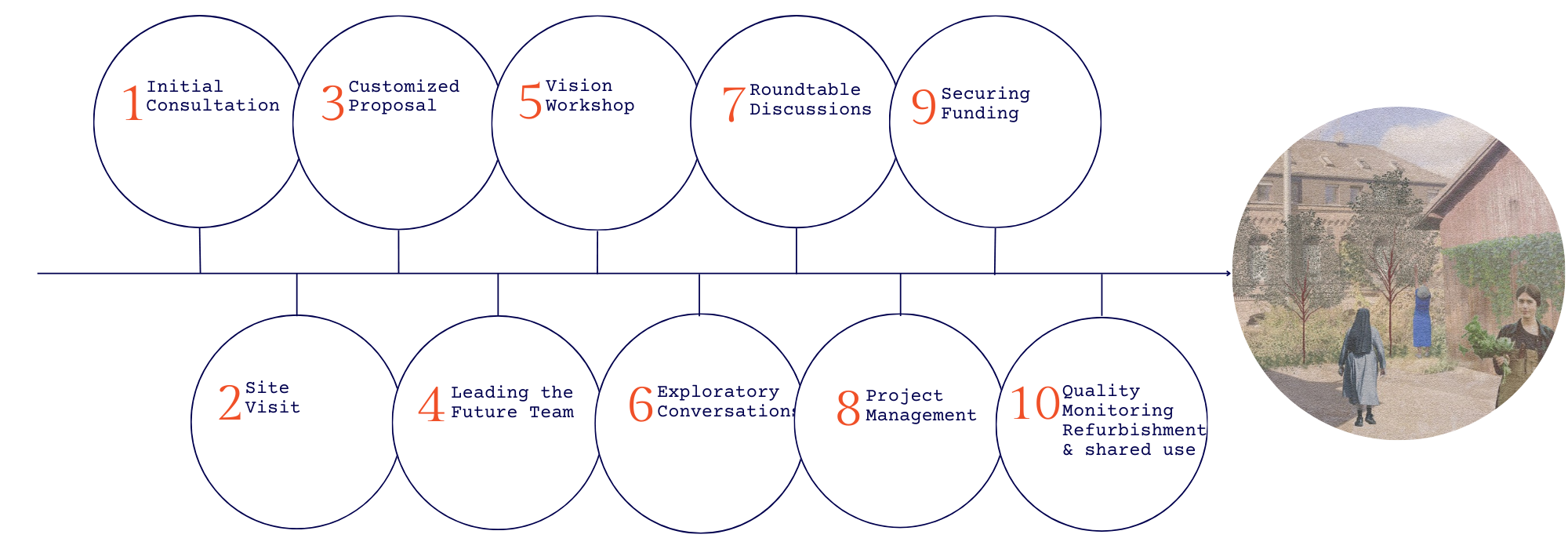
Our Network
